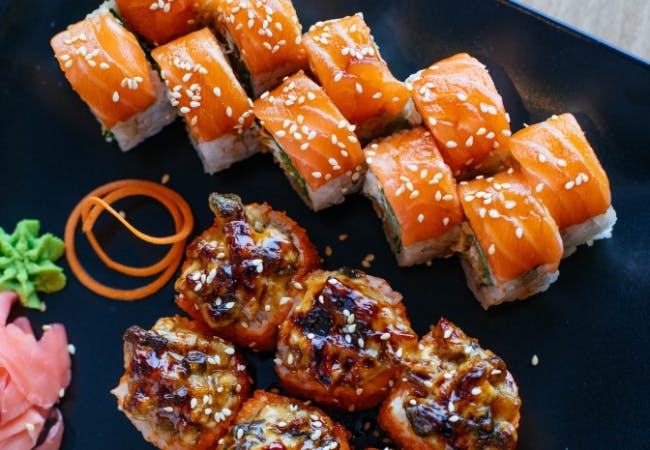your cart
Your cart is empty.
General Articles
Pan Asian Vs Asian Fusion Cuisine: What's the Difference?
The world of Asian cuisine is wonderfully diverse. Whether you want something traditional or a little more experimental, Pan-Asian and Asian fusion restaurants will more than deliver!

Asian cuisine is incredibly variable, encompassing food from a wide range of distinct countries across this expansive continent. The diversity of dishes, ingredients and cooking methods make this umbrella cuisine ideal for adaptation and experimentation.
These days, there are many terms thrown around to describe the food you will encounter in speciality restaurants. The two most relevant here are Pan-Asian cuisine and Asian Fusion cuisine – both concern Asian dishes but will have differing menus.
The conversation around fusion food is ever-present in the foodie world, especially regarding Asian cuisine, with searches for ‘Asian fusion’ seeing an 81% year-on-year increase from 2021 to 2022*.
But what do we mean by this term and any others you may come across when ordering at Asian cuisine restaurants?
What's the Difference Between Pan-Asian & Asian Fusion Food?
- Pan-Asian Food: Traditional dishes from across a variety of Asian regions.
- Asian Fusion Food: Combining classic dishes from different nations, often with quite different culinary traditions.
What is Pan-Asian Food?
A Pan-Asian menu or restaurant will incorporate traditional dishes, flavours and ingredients from countries across Asian regions. It offers a more representative taste of the different countries across the continent than you might typically experience from restaurants that serve food from just one Asian country (i.e. exclusively Chinese or Japanese restaurants).

Types of Pan-Asian Cuisine
Under this umbrella of Pan-Asian, you will typically find five different subsections of cuisine.
- West Asian Cuisine – i.e. food from Turkey or Syria (countries in the Middle East).
- Central Asian Cuisine – i.e. food from Kazakhstan or Tajikistan.
- South Asian Cuisine – i.e. food from India or Pakistan.
- Southeast Asian Cuisine – i.e. food from Vietnam or Thailand.
- East Asian Cuisine – i.e. food from China, Japan or Korea.
Here at Oriental Mart, we specialise in southeast Asian and east Asian food. Basic staples here include rice, noodles, soup/stew/curry, soy sauce and fragrant cooking oils – along with plenty of regional specialities.
Eating at a Pan-Asian restaurant gives you a great opportunity to try a range of new dishes and experience just how varied and interesting Asian cuisine can be.

What is Asian Fusion Food?
While Pan-Asian restaurants tend to serve dishes in their traditional form, Asian fusion restaurants aim to put a new twist on classic Asian dishes, combining them with traditional foods, ingredients or cooking methods from other nations around the world, blending aspects from several origins.
The contemporary culinary movement of fusion food is largely recognised to have developed in the 1970s when French chefs began experimenting with Japanese and other Asian traditions. However, a global food network has existed for centuries – humans have been sharing food and changing recipes ever since the inception of international travel and cultural exchange.
Our appetite for fusion food remains strong, with an average of 2,900 Google searches for ‘fusion food’ every month. When you hone in on particular countries, fusion food that use Asian countries and regions as the main influence are among some of the most popular, with ‘Indian fusion’ (1600 monthly searches) and ‘Hong Kong fusion’ (1000 monthly searches) garnering many more searches than ‘French fusion’ (40 monthly searches), for instance.

Trends in Asian Fusion Food
Japanese fusion foods are especially popular, with Japanese-Italian and Japanese-Mexican fusion being among some of the most searched culinary combinations.

In particular, sushi fusion is among the most popular Asian fusion dishes, being a term that garners 1,000 monthly Google searches. Interestingly, many of the sushi dishes we enjoy in the west may already be considered somewhat of a fusion as salmon sushi is a Norwegian invention – raw salmon wasn’t eaten in Japan until it was introduced by the Norwegians in the 1980s.

While Japanese cuisine has a rich, innovative history, as evidenced by the popularity of Japanese-based fusion food, many of the classic foods we associate with the country have been influenced by Chinese culinary traditions, including gyozas, mochi and even ramen, which are adapted from Chinese wheat noodles.
You can also see a history of European culinary influence in Japan with Tonkatsu, a breaded pork cutlet dish influenced by French cuisine.
Other foodie traditions brought over from the West include mayonnaise which was popularised in Japan in 1925 with the advent of super-popular Kewpie mayonnaise.

Ultimately, both Pan-Asian and Asian fusion cuisine can offer a multicultural foodie experience, intriguing your senses with a range of influences and traditions from across Asia.
Only question now is which dish will you be testing out in your kitchen next? Whatever you decide, you’ll find a delicious variety of authentic ingredients from across east and southeast Asia right here at our online Asian supermarket.
Shop now to bring your favourite Asian or Asian fusion dishes to life!
*Data used throughout collected from Google search volumes in 2022.
this site uses cookies
We and our advertising partners use cookies on this site and around the web to improve your website experience and provide you with personalised advertising from this site and other advertisers. By clicking allow, you accept the placement and use of these cookies for these purposes. Learn More


